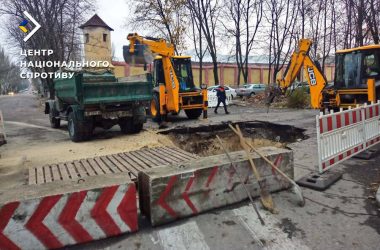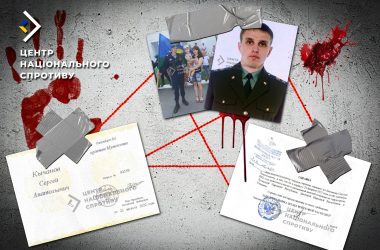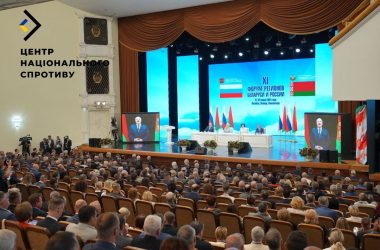In the temporarily occupied territories, the invaders pay particular attention to propaganda in schools. One of the areas of such influence on schoolchildren is the format of installing so-called “heroes’ desks” in the lobby of schools or classrooms. This is a specially designed element of the school’s interior that the occupiers invented in 2018 and has been improving all this time.
In particular, a “hero’s desk” was opened in the secondary school of the village of Sheliuhy in the TOT of Zaporizhzhia in honor of Zoia Kosmodemianska, a woman whom Soviet propaganda made a “role model” for young people. This alleged saboteur, who was supposed to set fire to everything in the rear of the Nazi-occupied territories, went down in history as the personification of patriotism and self-sacrifice. Since she died at the age of 18, her image has been regularly used in the USSR and now the Russian Federation for militaristic propaganda among schoolchildren.
It must be admitted that the idea of dedicating a desk in Sheliuhy to Zoya Kosmodemianska did not come out of nowhere. Since Soviet times, a monument to this figure has been erected in front of the school, which is located on the main street named after her. Decommunization measures were not implemented in this village on time, which greatly simplified the work of the Kremlin propagandists and the occupation administration in general.
The initiator of this area of propaganda is Yuri Shvitkin, a Russian military, statesman, politician, member of Putin’s United Russia party, and deputy chairman of the State Duma Defence Committee. He brought this project to the all-Russian level, so it received the status of a federal project, “Hero’s Desk.”
Information about the “Russian hero” is applied to the desk’s surface, covered with glass, or the surface is made of PVC, like a stand, which is then attached to the desk’s surface. They organize a grand opening where they emphasize the “heroism” of the character on the desk and note that only “the most successful students” will sit at such a desk. The desk is also necessarily labeled with the symbols of Putin’s political party and the symbols that the occupiers have created for the temporarily occupied regions. Thus, in this way, the occupiers are trying to stimulate the successful mastery of the Russian version of the school curriculum. If the student reproduces the information the teacher requires, he or she will sit at such a stylized desk as a reward.
The occupiers began installing the first such desks in the TOT in 2018 on the TOT of Crimea. The essence of this project is to imprint Soviet myths about pseudo-heroes of the so-called “Great Patriotic War” in the memory of young people and compare them with participants in the so-called “special military operation.”
The National Resistance Center actively monitors the facts of violence against the consciousness of Ukrainian youth and calls on citizens to continue to provide information about the actions of the occupiers in the TOT. All Russians and their accomplices from the TOT will be identified and brought to justice following Ukrainian law. Also, such figures are legitimate targets for the Ukrainian underground, as their activities are aimed at attracting young people to the Russian occupation forces and security agencies.





